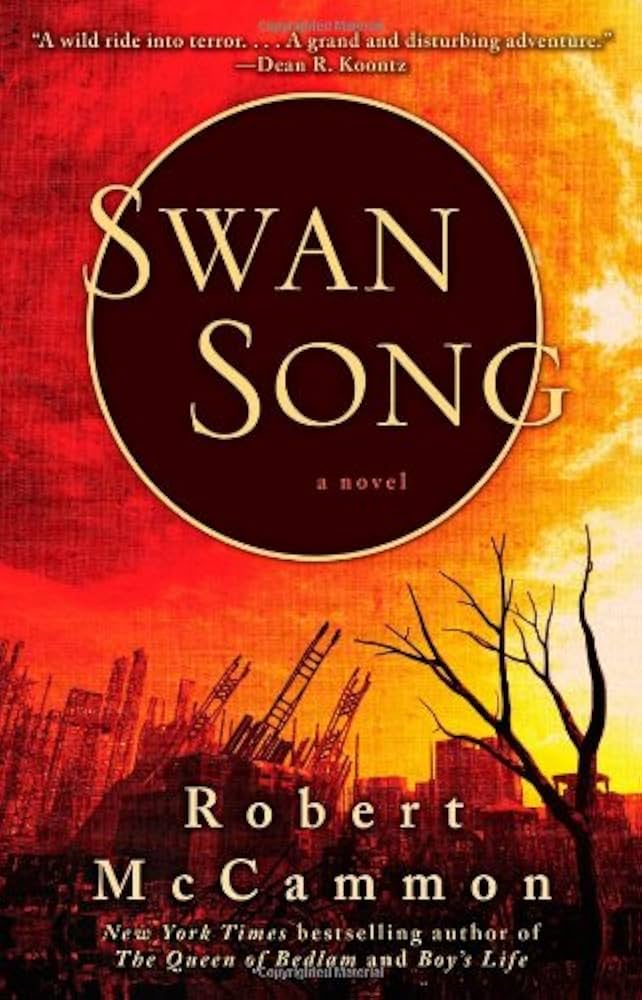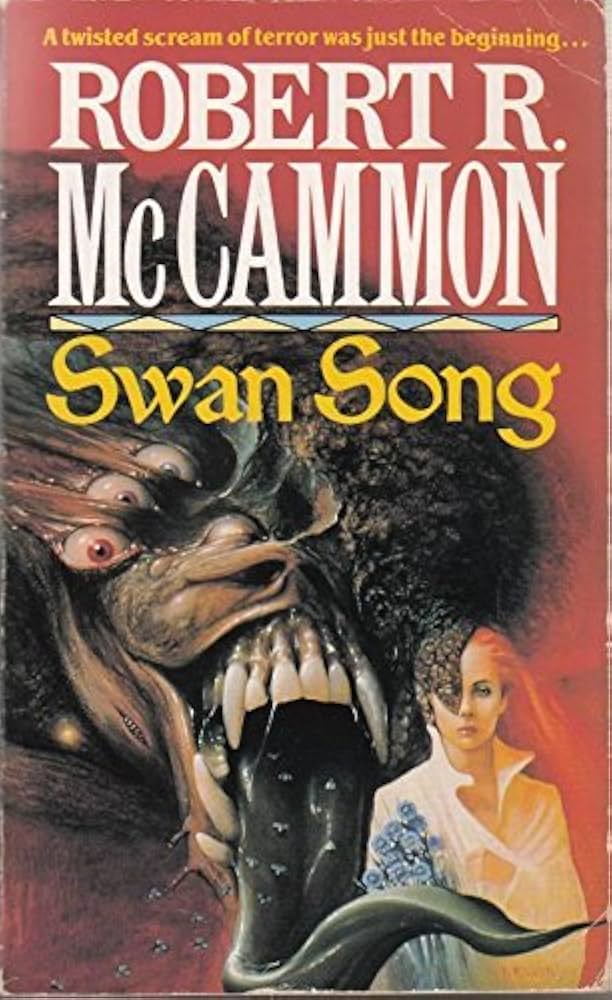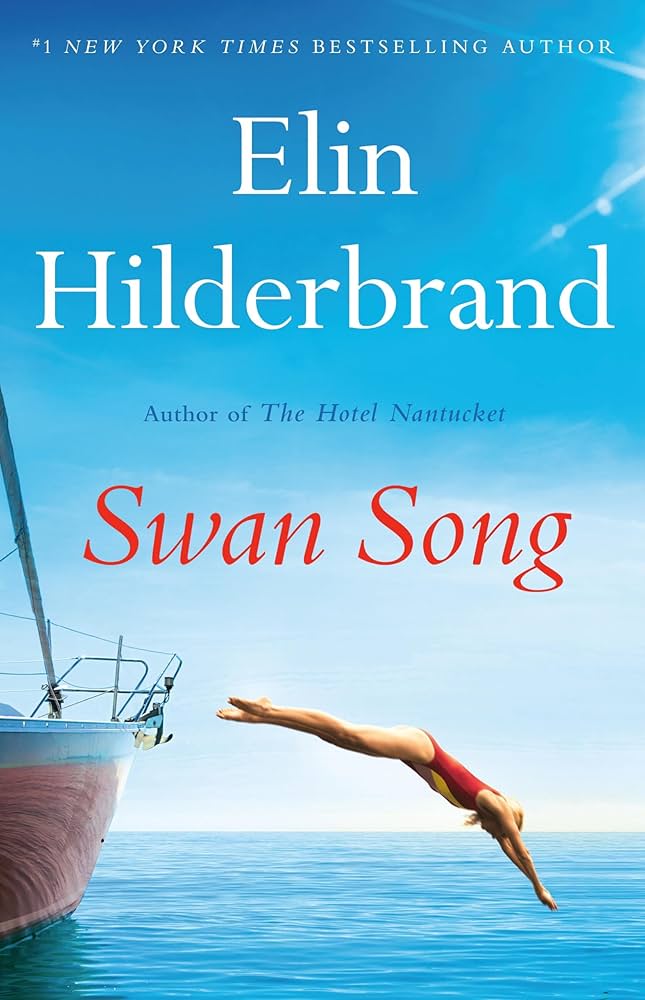Swan Song: A Deep Dive into McCammon's Post-Apocalyptic Masterpiece

Robert McCammon’s Swan Song, published in 1987, stands as a towering achievement in post-apocalyptic fiction. This sprawling novel, often compared to Stephen King’s The Stand, transcends genre conventions, weaving together elements of science fiction, horror, and fantasy into a gripping tapestry of survival, redemption, and the enduring power of hope. This extensive exploration delves into the novel’s intricate plot, memorable characters, lasting cultural impact, and its place within the broader literary landscape, drawing upon information found on websites like Lbibinders.org and Goodreads.
A World Forged in Fire and Ash: The Plot of Swan Song
Swan Song unfolds against the backdrop of a nuclear holocaust, a chilling depiction of World War III’s devastating aftermath. The United States is reduced to a desolate wasteland, shrouded in the perpetual twilight of nuclear winter. The novel follows the intertwined journeys of several key characters, their paths converging in a climactic confrontation that will determine the fate of humanity.

Among the survivors are Josh Hutchins, a professional wrestler known as “Black Frankenstein,” and a young girl named Sue Wanda, nicknamed “Swan,” who possesses a remarkable affinity for plant life. Their journey begins in the ruins of a Kansas gas station, where they seek shelter from the immediate fallout. In the subterranean tunnels of New York City, Sister Creep, a homeless woman with a haunted past, miraculously survives the initial blasts. Meanwhile, Colonel Macklin and the teenage Roland Croninger are trapped in a collapsed fallout shelter in Idaho.
As the dust settles, these disparate individuals embark on their own perilous journeys through a world transformed. Sister discovers a mysterious glass ring with supernatural properties, granting visions of a better future and driving her quest for a specific location. Josh and Swan, bound together by circumstance and a shared desire for survival, become a found family, their bond tested by the brutal realities of their surroundings. Macklin, displaying a chilling pragmatism, emerges as the ruthless leader of the “Army of Excellence,” a formidable force that ravages the landscape and amasses followers.
Seven years pass, the nuclear winter persisting. Many survivors bear the grotesque “Job’s Mask,” a flesh-like disease that obscures their faces. The Army of Excellence clashes with other factions, fueled by religious fanaticism and ruthless ambition. Sister’s visions eventually lead her and her companions towards Swan, whose unique abilities—the ability to revitalize dead plants—offer a glimmer of hope amid the desolation.

The various groups eventually converge, leading to a heart-wrenching and action-packed climax. The mystery surrounding the ring, the Army of Excellence, and Swan’s powers intertwine, culminating in a desperate struggle against the Man with the Scarlet Eye, a powerful, demonic entity who embodies chaos and seeks to extinguish the last embers of hope. In a tense standoff, the fate of the world hangs in the balance as Swan’s extraordinary abilities and the choices of the surviving characters will ultimately determine humanity’s destiny.
The Supernatural Element: A Twist on the Post-Apocalyptic

While firmly rooted in the post-apocalyptic genre, Swan Song incorporates a unique supernatural element. Sister’s glass ring and Swan’s powers add layers of depth and complexity to the narrative. These elements are not merely plot devices; they represent the enduring human capacity for hope, faith, and the miraculous even in the darkest of times. The ring and Swan’s abilities become symbols of resilience, representing the potential for rebirth and renewal in the face of utter devastation.
The Moral Ambiguity of Survival
The novel doesn’t shy away from exploring the moral ambiguity inherent in survival. Characters grapple with difficult choices, often compromising their values in the face of extreme circumstances. The Army of Excellence, for instance, embodies the potential for good intentions to be corrupted by power, demonstrating how even the desire for order can lead to cruelty and oppression. This exploration of moral ambiguity enriches the narrative, adding layers of complexity to the characters and their actions.
A Cast of Unforgettable Characters: The Heart of Swan Song
Swan Song’s enduring appeal lies, in part, to its compelling cast of characters. Each character is richly developed, with their own unique backstories, motivations, and flaws. This depth allows readers to connect with the characters on an emotional level, making their struggles and triumphs all the more impactful.
Swan: The eponymous protagonist, Swan, is a remarkable character. Her innate connection with nature and her ability to revive plant life serve as both a source of wonder and a symbol of hope. Swan’s journey is one of growth and transformation, her innocence tested by the harsh realities of the post-apocalyptic world.
Josh Hutchins: Josh serves as Swan’s protector, a gruff but ultimately kind-hearted figure who embodies selflessness and loyalty. His transformation from professional wrestler to reluctant guardian reflects the profound changes the apocalypse brings to his outlook on life.
Sister Creep: A former alcoholic and street person, Sister Creep’s redemption arc forms a major element of the story’s emotional resonance. Her initial cynicism and despair gradually give way to compassion and a unwavering commitment to her newfound faith.
Colonel Macklin and Roland Croninger: These characters exemplify the dark side of human nature. Their ambition for power and control leads to ruthlessness, showcasing how desperation can corrupt even those with once-noble intentions. Their rise to power also serves as a cautionary tale of the seductive nature of authoritarianism in chaotic times.
The Man with the Scarlet Eye: This enigmatic antagonist, also known as Friend and Doyle Holland, is one of McCammon’s most terrifying creations. A shape-shifting entity that seemingly fuels the events of the apocalypse, he personifies the seductive power of nihilism.
Each character plays a crucial role in the narrative, their interactions fueling the story’s emotional and psychological depth.
Beyond the Pages: Swan Song’s Cultural Impact and Literary Influence
Swan Song has had a significant impact on the post-apocalyptic genre since its release, influencing countless novels and other works in the genre. The novel’s vivid depiction of a nuclear winter, the relatable characters and their moral struggles, and the haunting imagery have resonated with readers for decades.
Its lasting impact is further evidenced by its critical recognition. The book won the 1988 Bram Stoker Award for Best Novel and the 1994 Japan Adventure Fiction Association Prize for Best Translated Novel. This acknowledgment cemented its place as a significant work of literature within the genre.
Swan Song’s influence also extends to its stylistic innovations. The novel’s unique blend of horror, science fiction, and fantasy elements established new avenues for exploration in post-apocalyptic narratives. The use of multiple character perspectives, while potentially challenging for some readers, adds to the novel’s unique structure and emotional complexity. McCammon’s rich, evocative prose creates a palpable sense of atmosphere, immersing readers in the grim beauty of the nuclear winter landscape.
The novel’s enduring popularity is a testament to its ability to tap into timeless themes. The struggle for survival, the search for meaning in a world destroyed, and the unwavering power of hope—these universal elements transcend genre boundaries, solidifying Swan Song’s place as a post-apocalyptic classic.
Comparisons to The Stand: A Point of Reference, Not a Diminishment
The frequent comparisons between Swan Song and Stephen King’s The Stand are inevitable given their shared thematic elements and narrative scope. Both novels depict the devastating consequences of an apocalyptic event and explore the struggle between good and evil within the context of a shattered world. However, Swan Song possesses a distinctive voice and approach. McCammon’s vivid prose, character development, and integration of supernatural elements distinguish the novel from The Stand, rendering them unique and equally compelling experiences, appealing to readers of different tastes.
Conclusion: An Enduring Legacy
Robert McCammon’s Swan Song is more than just a post-apocalyptic novel; it’s a powerful exploration of the human spirit’s resilience. The novel’s gripping narrative, memorable characters, and lasting cultural influence make it a true masterpiece of the genre. While the length and style might not appeal to all readers, Swan Song’s potent blend of horror, science fiction, fantasy and intense emotional impact solidifies its position as a modern classic. Its ability to explore universal themes of survival, hope, and the complexities of human nature ensures that its legacy will continue to resonate with readers for generations to come. The upcoming television adaptation promises to further expand the novel’s reach and introduce McCammon’s masterpiece to a new generation of readers.